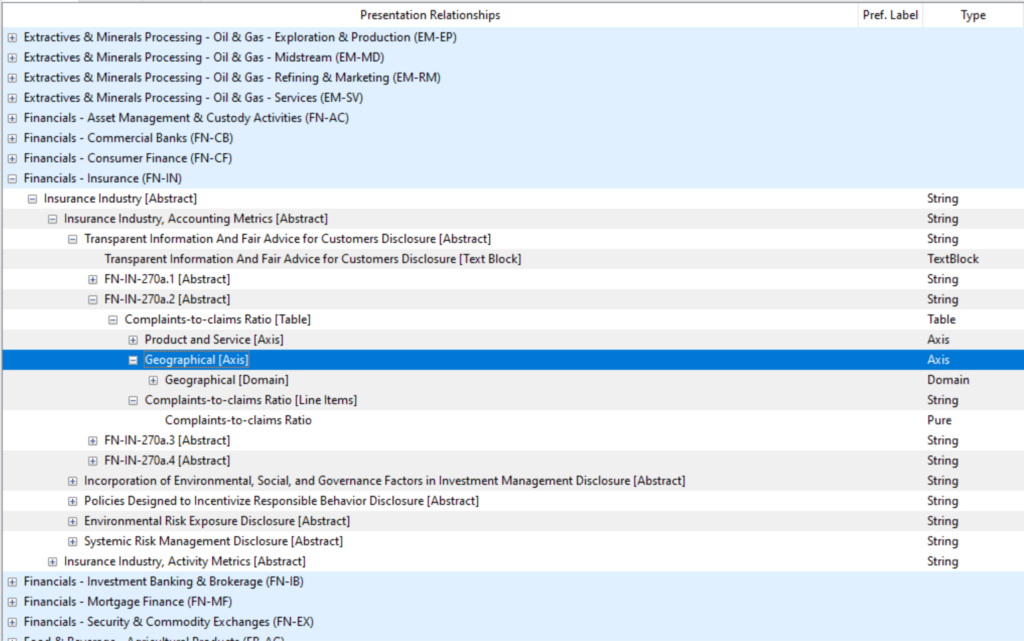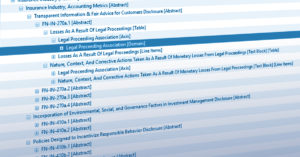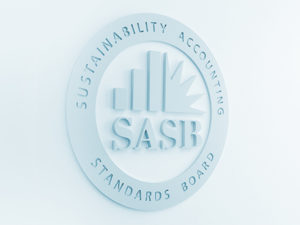
Madhu Mathew, Director of Technology, SASB
Today we are pleased to announce that SASB XBRL taxonomy is now available for public comment. The public comment period will be open for a period of 60 days. It ends on May 3rd, 2021.
In October of 2020, we had announced that SASB engaged PwC to support us in the development of the taxonomy. In a matter of just three months, PwC was able to help us rapidly build the initial draft version of the taxonomy that encompasses the 77 industry standards. It has been a wonderful experience working with the PwC team. Their expertise and strategic guidance have been invaluable.
We are thankful and appreciative of the XBRL community who collaborated with us to review the draft taxonomy and provide feedback. We would also like to thank the team at Workiva for letting us use their platform to test the draft taxonomy and generate sample XBRL instance documents.
What are the key aspects of the taxonomy?
- Reporting Format Agnostic – The SASB Taxonomy is, by design, agnostic to the reporting format. It supports both the traditional XBRL format and the inline (iXBRL) format.
- Hierarchical Structure – The presentation of the taxonomy (using its presentation linkbase) identifies its structure. Refer to Figure 1 below for an example of the hierarchical structure of the taxonomy.

SASB Standards include a unique set of metrics for each industry. As displayed above, presentation roles refer to each industry (e.g., Insurance). An abstract element for the industry exists (e.g., Insurance Industry [Abstract]), followed hierarchically by an abstract for the accounting metrics (e.g., Insurance Industry, Accounting Metrics [Abstract]) and the abstract for the activity metrics (e.g., Insurance Industry, Activity Metrics [Abstract]). The accounting metrics are then split by an abstract for each disclosure (e.g., Transparent Information & Fair Advice for Customers Disclosure [Abstract], and so on). Each is then followed hierarchically by an abstract for the accounting metric within the SASB Standards (e.g., FN-IN-270a.2 [Abstract]). Sub-metrics for the particular accounting metric are included under each accounting metric abstract.
Subsequently, in instances where a concept is intended to be reported dimensionally (e.g., for various geographical areas, by race or ethnicity, by pollutant, etc.), table structures exist within the taxonomy identifying the taxonomy-defined dimensions (e.g., members) that may be used (as seen in Figure 1 above).
- Ability to Tag Transparent Information and Fair Advice for Customers Disclosures – The taxonomy allows preparers to tag Task Force on Climate Related Financial Disclosures (TCFD) related disclosures.
- Encourages Anchoring when Extending -We discourage the extension of the base SASB Taxonomy, due to the specificity of the SASB taxonomy. When there is an absolute need to extend and report entity-specific information, preparers are encouraged to follow the guidelines that have been developed to address the concept of “anchoring” following the ESEF guidelines. This will help users of the information compare information between companies for similar concepts.
What is available as part of the public comment package?
- The draft version of the taxonomy
- Preparer guide
- Sample XBRL instance document
- Step by step guide on how to use Workiva WDesk platform to tag SASB data
- An introductory guide to CoreFiling Seahorse platform
Note: SASB has collaborated with software providers to explore how the SASB XBRL Taxonomy can be integrated into XBRL based reporting platforms to provide a seamless experience for preparers. SASB aims to work with all market participants to ensure the SASB Taxonomy is available and widely used. The examples above are not intended to be an endorsement of any software platform. Rather, they are meant to highlight how the taxonomy can be used once it is integrated into a software platform.
What is the goal of the public comment period?
SASB seeks public feedback on the draft taxonomy to ensure that it is useful both for data producers as well as data consumers. We encourage you to also consider the following questions as you consider providing a public comment.
- Do you foresee any issues with the taxonomy being used globally across jurisdictions?
- Do you have any recommendations to enable wider adoption of XBRL based SASB reporting?
- Do you agree with the recommendation of anchoring that we have proposed for taxonomy extension?
- Should SASB taxonomy use elements from GAAP/IFRS taxonomies where applicable?
- Should SASB taxonomy use typed dimensions?
- Has the taxonomy adequately addressed tagging of TCFD disclosures?
- In the preparer guide, we have outlined a process for governing the taxonomy going forward. Please let us know if you have recommendations and/or the structure of the proposed taxonomy review committee.
How can the public provide feedback?
The draft taxonomy, the preparer guide and supplemental materials are now available on SASB’s website for review and public comment. We encourage you to share your comments, questions, and concerns using the public comments form on the page. The 60-day public comment period will remain open through May 3rd, 2021.
To learn more about SASB’s XBRL effort and stay informed about updates, please contact us at [email protected].
Madhu Mathew is Director of Technology at SASB, and is leading SASB’s XBRL effort.

SASB utilises Fujitsu XWand tools in its XBRL taxonomy creation process to enable structured reporting on SASB Standards.



